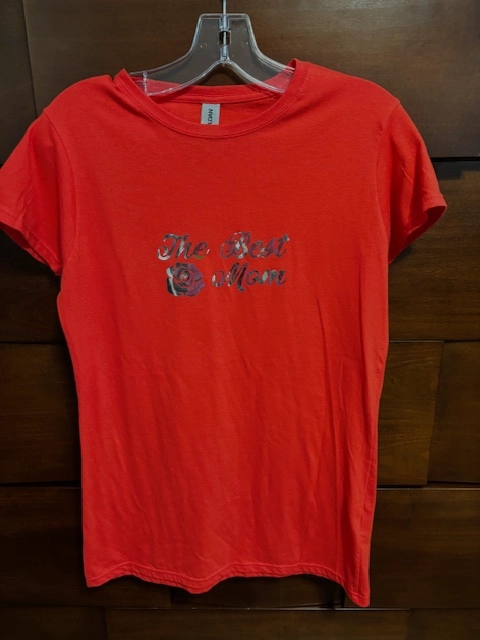The Art of Custom Embroidery: Unlocking the Tricks to Creating Special and Remarkable Designs
The keys to producing customized embroidery layouts that astound the eye and leave an enduring perception lie in a delicate balance of strategy, imagination, and interest to detail. As we delve into the globe of custom-made embroidery, we uncover the nuanced interplay in between thread choice, stitch complexity, and layout personalization that elevates a plain garment to a job of art.
Choosing the Right Needlework Threads
When choosing needlework threads, what essential variables should you think about to make sure the most effective results for your personalized designs? The option of needlework string is essential in establishing the final result of your stitched layout. Among the primary considerations is the product of the string. Different materials such as cotton, polyester, rayon, and silk provide differing degrees of luster, sturdiness, and appearance. It is important to select a thread material that matches the textile you are stitching on and aligns with the desired look of the style.
Thicker threads can add measurement and structure to your design, while finer strings are excellent for complex details and tiny message. Additionally, taking into consideration the shade fastness and washability of the thread is critical to make sure that your custom layouts preserve their quality and vibrancy over time.
Checking Out Different Stitch Strategies
To delve right into the realm of 'Discovering Different Stitch Strategies', one need to grasp the details and nuances that each sewing technique offers the art of embroidery. Various stitch methods not just add aesthetic interest however also add to the overall appearance and dimension of the style. One preferred stitch method is the satin stitch, which entails closely stuffed parallel stitches to create a smooth and shiny surface area, ideal for filling up in forms and creating strong lays out.
On the other hand, the backstitch is a functional technique typically made use of for describing and including fine details. It entails stitching backwards to develop a solid line of needlework. In addition, the French knot stitch adds a responsive element to layouts, perfect for creating textured accents like blossom facilities or decorative touches.
Exploring different stitch methods permits embroiderers to have fun with light, shadow, and depth within their designs, raising the aesthetic allure and imaginative top quality of their needlework projects. By understanding various stitching approaches, one can unlock unlimited possibilities for creating unique and unforgettable custom-made needlework items.
Incorporating Personalized Layout Components
Having actually discovered the details of various stitch strategies such as the satin stitch, backstitch, and French knot, the emphasis currently moves in the direction of integrating individualized style aspects in customized embroidery projects. Personalized design elements play an essential role in making embroidery tasks absolutely one-of-a-kind and remarkable. One method to integrate personalization is by including initials, names, or substantial days to the style. This not only includes an individualized touch however likewise enhances the nostalgic worth of the embroidery piece.
An additional way to include customized design aspects is by including icons or motifs that hold why not try these out unique meaning to the recipient or mirror their interests and individuality. Integrating a favorite flower, pet, or hobby-related symbol can make the needlework layout much more purposeful and customized. In addition, choosing colors that reverberate with the recipient or align with the designated motif can even more improve the customization of the embroidery job.
Mastering the Art of Color Sychronisation

One key facet of color control is understanding shade theory. This consists of knowing just how different shades interact with each various other, the feelings they communicate, and just how they can be combined to develop visually enticing designs. By using shade theory concepts, embroiderers can develop harmonious shade palettes that improve the total look of the style.
In addition, taking note of comparison is crucial in color sychronisation. Making use of contrasting colors can assist particular elements of the style pop, boost legibility, and produce an aesthetically dynamic embroidery item. By understanding the art of color sychronisation, embroiderers can raise their layouts and create unforgettable items that reverberate with customers and viewers alike.
Enhancing Texture With Advanced Embroidery Stitches
Bullion knots, on the other hand, can be made use of to develop twisted, ropelike components that include a lavish feeling to the needlework. Exploring with these sophisticated embroidery stitches allows you to press the borders of standard embroidery and create truly unique and aesthetically enticing structures in your designs.
Conclusion
Finally, the art of personalized needlework includes a combination of picking the ideal threads, exploring numerous stitch methods, integrating customized design components, grasping color control, and improving texture with innovative stitches. By comprehending and implementing these crucial elements, embroiderers can create one-of-a-kind and unforgettable designs that display their creativity and ability. Embroidery look at more info enthusiasts can unlock the secrets to developing stunning and bespoke pieces that stand out and leave a long-term perception.